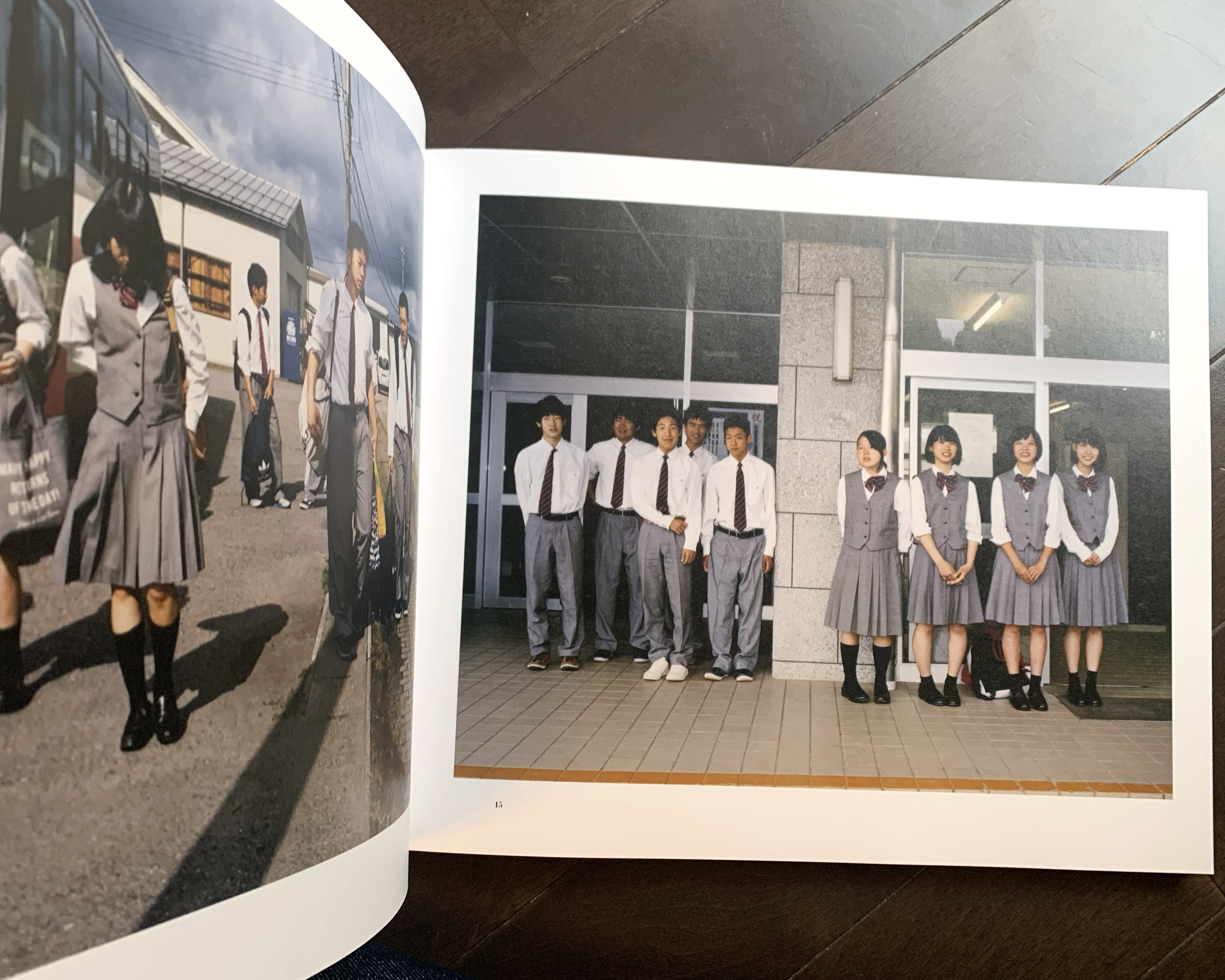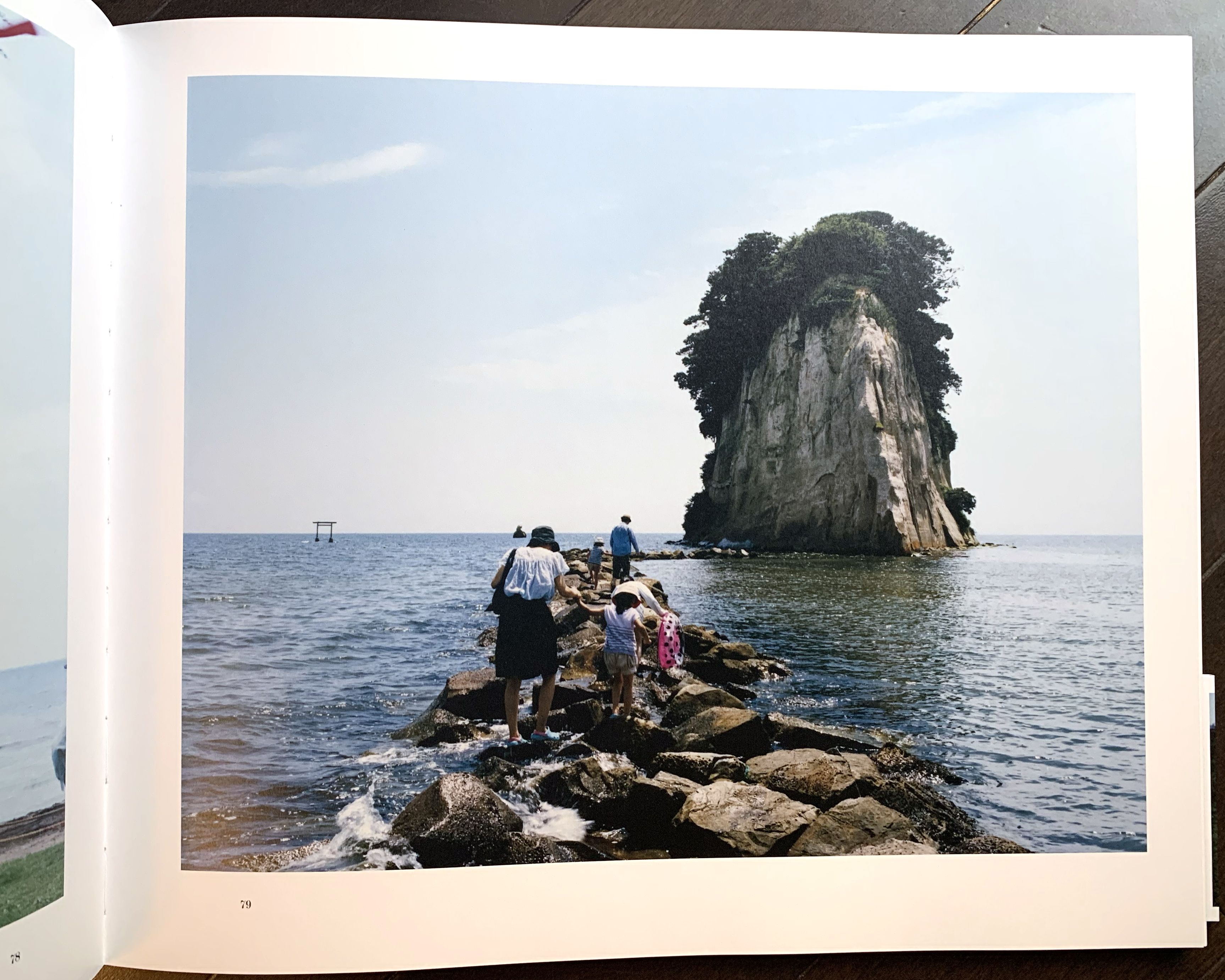コラム
落合憲弘
John Sypal
タカザワケンジ
なぎら健壱

Unfolding out from the northern edge of Honshu into the Sea of Japan is Ishikawa prefecture’s Noto peninsula. At its tip lies the far smaller Okunoto peninsula, a rocky, ragged coast that curves back in the direction of the main island. It was to this part of Ishikawa prefecture that different Ishikawa, Naoki, visited and photographed over five years.
Before receiving Naoki Ishikawa’s latest book, practically titled “Okunoto Peninsula”, I had never thought about (or even heard of) the place. A quick Google search brought up plenty of Japan travel guides that celebrate its rugged coasts and historic salt mines but cautioned that it remains difficult to travel to by train. That such a remote, rural (and photogenic) place would be visited by Ishikawa was not surprising- his business card literally says “adventurer”. Traveling with his camera is what he does. Ishikawa, who left Tokyo to travel solo to India and Nepal while still in high school, had climbed all seven summits and completed a pole to pole expedition before he was 25 years old. Ishikawa’s accomplishments are for another time (or, check his article on Wikipedia).

The book: It’s beautiful. It's charming. It makes me want to travel. Like all of Ishikawa’s books generally are, it is sequenced in the order of his travels. This gives it a feeling of immediacy and zero pretension. Ishikawa’s travels become in a way our travels- his interactions with locals, be they high school students, village elders, salt miners, or performers at festivals- each encounter feels genuine. I become fonder for the book each time I go through it.
Naoki Ishikawa is a prolific photographer, traveler, writer- but what I admire most about him is the trueness to which he keeps himself. By this I mean consistency in vision- a popular photographer, his work appears in magazines and he has had at least 35 photobooks published. Many books are collected by locations- K2, the Himalayas, and Okunoto Peninsula. But, no matter the place or book, upon opening any one of them to a random page, the image you’ll find is undeniably his. Part of this is due to his equipment- nearly always uses a 6x7 format rangefinder camera with an 80mm lens (A Makina 67 or Mamiya 7II) and Kodak film. His approach could be called “snapshot”, but the results are purer than that. There’s such a simplicity to how he shoots- never do I feel he’s trying to be clever with composition- perhaps a point that would confound Western photo editors. Ishikawa’s pictures have a glow of amateurism to them- instead of trying to sell you a concept, they look like how you think it would feel to be there at that festival, or there with those students, or standing there looking out at an island bluff along the coast.
To me, an Ishikawa photograph is one in which man and nature, the past, present, tradition, youth, life and death, all appear in various degrees. His eye is inquisitive, yet never political or judgmental. They’re celebrations, not sermons. Donald Riche’s thoughts on the Japanese humanisms come to mind- yes, Ishikawa’s work very much celebrates the natural commingling of the profane and sacred in Japan of which he so eloquently wrote. As I look at these pictures of beautiful, ruddy faces, of these practical structures and ragged rocky coasts, I am able to feel part of that vibration of human existence that Naoki Ishikawa is naturally attuned to. This is, to me, the core of his spirit- and his photography.

本州の北端から日本海に突き出した石川県の能登半島。その先端にある奥能登半島は、本州の方向へ伸びる岩だらけの海岸です。今回のコラムの中には二つの「石川」があります。「石川」県、そして写真家「石川」直樹さん。この写真集は石川さんが5年を労し石川県を訪れ、撮影を続けた本です。
本書のタイトルとされた『奥能登半島』ですが、私はこれまでこの地について考えたことも、ましてや聞いたこともなかったです。Googleで検索すると日本の旅行ガイドがたくさん出てきて、その険しい海岸や歴史的な塩田を賞賛しているのですが、電車で行くのは難しいという注意書きがあります。「なるほど、そういうところなんだー」と思いました。石川さんの名刺には「冒険家」と書かれているように、彼がこのような人里離れたフォトジェニックな田舎町を訪れることは驚くことではありませんでした。カメラを持って旅をするのが彼のライフワークなのです。 石川さんは高校時代に東京を離れ、インドとネパールを単独で旅して、25歳までに七大陸最高峰をすべて登り、人力のみで北極から南極まで縦断するという過酷な「Pole to pole 2000」計画に唯一の日本人として参加し達成したすごい人です。

今回の写真集も魅力的です。石川さんの写真集は基本的に、写真を撮った順番で構成されています。これはなかなかリアル感が出るところです。臨場感があり、気負いがない。写っている高校生、村の長老、塩鉱夫、祭りの出演者など、石川さんの旅は、写真を通すことで私たちの旅になり、それぞれの出会いが純粋に感じられます。読み進めるたびに、この本が愛おしくなってきます。

石川直樹さんは、写真家、旅行家、作家として多方面で活躍していますが、私が最も尊敬しているのは、彼が自分自身に忠実であることです。 人気写真家として彼の作品は雑誌に掲載され、少なくとも35冊の写真集が出版されています。K2、ヒマラヤ、奥能登半島など、撮影地ごとにまとめられた本も多い。しかし、どんな場所でも、どんな本でも、どのページを開いても、そこにあるのは紛れもなく「石川さんの写真」です。

その力のひとつは、彼の道具にあると思います。カメラがほとんど6×7判のレンジファインダーカメラ(マキナ67かマミヤ7Ⅱ)に80mmのレンズ、コダックのブローニーフィルムを使用しているそうです。彼のアプローチは「スナップショット」とも言えますが、その結果はそれ以上に純粋なものです。構図に工夫を凝らそうとする感じがなく、石川さんの写真にはアマチュアリズムの輝きがあると思います。コンセプトを売りにするのではなく「あの祭りに参加したら」「あの学生と一緒にいたら」「海岸沿いの島の断崖を見たら」どう感じるだろう、と思わせるような写真なんです。私にとっての石川写真とは、人間と自然、過去と現在、伝統、青春、生と死がさまざまな度合いで登場します。彼の眼差しは好奇心旺盛でありながら、決して政治的、判断的ではありません。彼の写真は祝祭なんです。彼が雄弁に語った日本の俗と聖の自然な交わりを非常によく表しています。美しい顔の写真、実用的な建造物、荒磯の写真を見ていると、石川直樹さん自身が自然に感じ取っている人間存在の振動の一部を感じることができるのです。これこそが、石川直樹の精神であり、写真であると思います。
- Okunoto Peninsula
- Seidosha, 2021
- Naoki Ishikawa
- 石川直樹『奥能登半島』
- 285×140×240mm・144ページ
出版=青土社(2021年)


PCT Membersは、Photo & Culture, Tokyoのウェブ会員制度です。
ご登録いただくと、最新の記事更新情報・ニュースをメールマガジンでお届け、また会員限定の読者プレゼントなども実施します。
今後はさらにサービスの拡充をはかり、より魅力的でお得な内容をご提供していく予定です。
 「Photo & Culture, Tokyo」最新の更新情報や、ニュースなどをお届けメールマガジンのお届け
「Photo & Culture, Tokyo」最新の更新情報や、ニュースなどをお届けメールマガジンのお届け 書籍、写真グッズなど会員限定の読者プレゼントを実施会員限定プレゼント
書籍、写真グッズなど会員限定の読者プレゼントを実施会員限定プレゼント